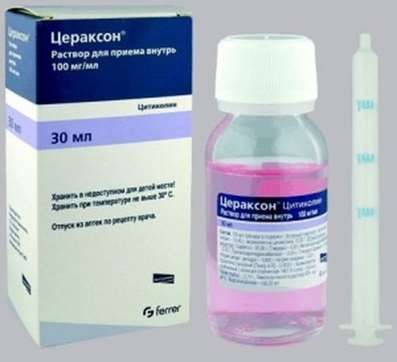Types of Imagination
07 Nov 2016
Psychologist Dr. Doping speaks about the function of the creative imagination, methods of problem solving and motivation problem.
Imagination - the last of the three through mental processes, forming the axis of our psychological time. And if memory connects us with the past, attention - to the present, the imagination, in fact - with the future or possible. Therefore, to define it is possible after local researchers imagination Valery Viktorovich Petukhov, on which I will continue to rely heavily, roughly as follows: the imagination - is the construction of new, not previously existing images of objective reality that we need to organize future behavior and future activities in uncertain situations. And the range of phenomena of the imagination is really too wide enough.
To improve mental and cognitive function – one can buy Picamilon, Vitamin B12, Cogitum, Semax, Cortexin, Noopept.
Conventionally, all these phenomena can be divided into two groups: the imagination and recreates the creative imagination. As for the re-creative imagination, the most studied example - the so-called perceptual imagination, the most studied material on mental rotation. In the 1980s, Roger Shepard and his colleagues conducted now famous experiments in which people were shown two-dimensional shape, rotated relative to each other, and the man had to determine: it is the same figure or figures is mirrored? It was found that while solutions of this problem is directly proportional to the rotation angle shape. The impression that one is actually mentally rotate pieces in order to respond to the problem, ie, converts the image in his mind. More complex forms of reproductive imagination - is, for example, the construction of the image from its projections or build an image from the description, as when we read a work of art, or get acquainted with the instructions on how to go somewhere.
But creative imagination is fundamentally characterized by the absence of this kind of support, that is, the creation of new images in the special features. What is important here, that actually functions in the image may be a few. Take a simple example: Suppose I draw a circle. What it is? I can say that it is the sun or a plate. In this case, the image appears in its most simple function - Picture function. Or I can say that it means "the movement is forbidden", "no movement" - we often see a circle on the roads. Here, this value has no connection with the specific content of the image. It might be a square, could be a triangle, but agreed that it is a circle. This is the sign function. Or, finally, I can say this unity, or is it perfect, or that the integrity of, or is this equality that the terms meant for the Knights of the Round Table. And you either understand or not understand, and I'll have to explain to you. What is the function? This image of the character. And the creative imagination in fact has no bearing on any image of the image or the image of the mark, but only the image of the character. And we can determine, in essence, as the construction of characters as a way to represent reality. So when we start talking about the development of creative imagination of the stimulation of creativity, we can see that all of the methods that have been developed in modern psychology, and not only in psychology - are methods unmeanings, departure from the values on which people have agreed before, those values that we learn in the course of the entire training, attempt to see the unresolved problem situation with some other, unexpected side.
Among the creativity stimulation methods are best known, perhaps, are two: on the one hand, it is the domestic theory of inventive problem solving, which is offered at the time Genrich Altshuller, on the other hand - a method called synectics, American researcher William Gordon. What are the similarities between them? Just the fact that they are trying to get away from the values and approach to the main features of the creative imagination - to symbolize. How this is done in the theory of inventive problem solving, or TRIZ, as it is abbreviated as? For example, there is a very popular method of little people. Inventors, decisive, seemingly unsolvable problem, it is proposed to imagine that the solution to this problem involved a lot of small, little people that are out there running around and doing what is necessary: can hold hands, can release the hand, may line up in any way. And it turns out that it allows us to understand the mechanism that is necessary, in fact, invent. This is a very good impetus to solving the problem.
Or inventors may be invited to provide that the problem has been solved thanks to the gold fish or because they rubbed a magic lamp of Aladdin. What to do next? Expanding the solution implemented on a piece and a piece of magic. For example, we can catch fish, but to ask her to the task decided - it is a magical piece. Magic piece we can continue to spread: the fish can take up, we can talk to her; Does she understand us, and if our desire to fulfill - a magical piece. Then we begin to lay out this magical piece is also implemented in the next and magic. And so long as the problem is not solved magically. Or, in the theory of inventive problem solving are very fond of playing with such an operator, as a "size - time - cost" - PBC, as they call it. How? And, for example, reducing to a minimum or to the maximum inflating either of these operators. For example, we need to figure out how to lower the beam, and we imagine that the beam size of the globe. Or do we need to figure out how to do some manufacturing operations - we imagine that it is carried out in a split second, and because of this decision can also be found.
In the method of William Gordon, called synectics, ie combining external to each other, combining heterogeneous, with the same purpose used the analogy that vary widely. For example, a direct analogy (the most common method): we compare what we need to find something, for example, from the field of nature or of art. So at one time it was invented by way of packing chips Pringles, which had to be folded as tightly as possible. This was associated with cleaning wet foliage after rain - wet foliage are packed much tighter than dry. Or presumably because Harvey discovered the principle of the heart, comparing it to the pump.
We can compare what we need to find, with ourselves, using the so-called personal analogy. For example, we need to understand how to optimize the work of the organization. Introducing: the organization - it's me, such a part of the organization - it's such a part of my body. Next we will try to shake down, negotiate and so on. Or we can use the analogy of a symbolic or poetic. Usually it is paradoxical, internally contradictory metaphors like the one that the book - it's a silent narrator. And because of this incompatibility, we will continue to pull out some features we need.
Finally, the last kind of similar, very similar to the goldfish from the theory of inventive problem solving - this analogy is fantastic. We imagine that the problem is already solved. For example, we need to attract customers into the store, so they went there. We imagine that the shop itself comes to customers, and begin to develop this idea, think out, for example, to e-commerce or even to something such.
But the most important thing that we, first of all, rely on the sphere shaped, and secondly, try to make maximum use of the ability to build new images. As they are built? This question is believed to be fully answered all at the end of the nineteenth century, the famous French psychologist Théodule-Armand Ribot. Subsequent development anyway repeated it. He singled in the imagination of two main factors. Factor first - the mental, or intellectual. What you need to build a fundamentally new way? On the one hand, the need to work with the images that we have, to allocate them in a variety of side issues. Ribot calls this mechanism dissociation. Psychology of thinking such operations relates to the field of analysis. We can distinguish the image of one aspect, two, three ... What's next? And then relate them to each other. This mechanism Ribot calls the association. For example, we looked at a cloud, to say that it looks like an elephant. This will just compound never before connecting parts, that is an act of creative imagination. But, according to Ribot, the mental factor to its dissociation and association operations worth nothing without the second factor - emotional. In fact, emotions, beginning with the inspiration, is still not really learned, and ending feelings, maybe somewhere alarm somewhere joy - it is, on the one hand, the necessary condition for the imagination, on the other - an enzyme for generating new creative images. And indeed the will to creativity or motivation - an important condition for the creative act took place. And in modern psychology is really the main problem, the main field of study of the creative imagination - this study is motivation of creativity. What moves an artist? What moves a filmmaker? What moves the writer who creates your imagination? Because everything else, as practice shows, in general, is a matter of technique. And the very desire for creativity, desire to build characters who decide maybe not yet existing, future problems - this is the most interesting question.

 Cart
Cart





